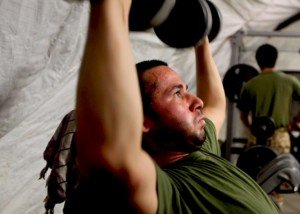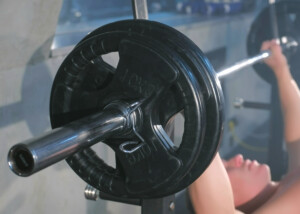
You can have a “winged scapula” and not even know it.
When’s the last time you looked at your upper back in a mirror? A winged scapula can progress and require treatment.
A winged scapula could look quite alarming, especially when the patient leans their palms, arms bent, against a wall.
This will cause the bone to to protrude out. This protrusion can be quite significant in appearance.
Nevertheless, having a winged scapula doesn’t necessarily come with symptoms that the patient can feel in the form of pain or weakness.
“Scapular winging is often asymptomatic, at least until it presents with significant weakness or cosmetic deformity,” says John-Paul H. Rue, MD, orthopedic sports medicine surgeon with Orthopedics and Joint Replacement at Mercy Medical Center in Baltimore, MD.
“Except in cases of trauma, scapular winging may present as a gradual process, or not be noticed initially because it can be difficult to assess scapular winging on your own shoulder.
“It is often only visible when viewing someone’s shoulder from behind with his or her shirt off.”
When the patient does have symptoms from a winged scapula, they can be as follows:
• Pain or discomfort in the scapular region when this area of the back is against a chair when the patient is seated.
• Pain in the shoulder blade area.
• Restriction with shoulder elevation.
Though scapular winging can be debilitating, it can also — as Dr. Rue has said — present with no symptoms.
If the symptoms reach a debilitating level, the patient will have difficulty lifting, pushing and pulling heavy objects and even performing the movements of daily living like brushing hair.
If you seem to have a winged scapula but are not experiencing any symptoms, it’s still important to see an orthopedic physician.
A winged scapula occurs when the shoulder blade (scapula) protrudes out abnormally, often due to weakness or dysfunction in the muscles that stabilize it, such as the serratus anterior muscle.
An orthopedic physician can evaluate the underlying cause, which could range from nerve damage (such as injury to the long thoracic nerve) to muscle imbalances or postural problems.
Early assessment can help prevent potential complications and improve treatment outcomes, if necessary, to maintain shoulder strength and function.
Though there are no symptoms in some cases, a winged scapula can start producing symptoms down the road.
There are many causes of this condition, and treatments vary.
 Dr. Rue specializes in prevention and treatment of sports and exercise injuries. His primary focuses are knee, shoulder and elbow injuries including ACL and cartilage injuries, rotator cuff injuries and overuse tendonitis.
Dr. Rue specializes in prevention and treatment of sports and exercise injuries. His primary focuses are knee, shoulder and elbow injuries including ACL and cartilage injuries, rotator cuff injuries and overuse tendonitis.
 Lorra Garrick is a former personal trainer certified through the American Council on Exercise. At Bally Total Fitness she trained women and men of all ages for fat loss, muscle building, fitness and improved health.
Lorra Garrick is a former personal trainer certified through the American Council on Exercise. At Bally Total Fitness she trained women and men of all ages for fat loss, muscle building, fitness and improved health.
.









































